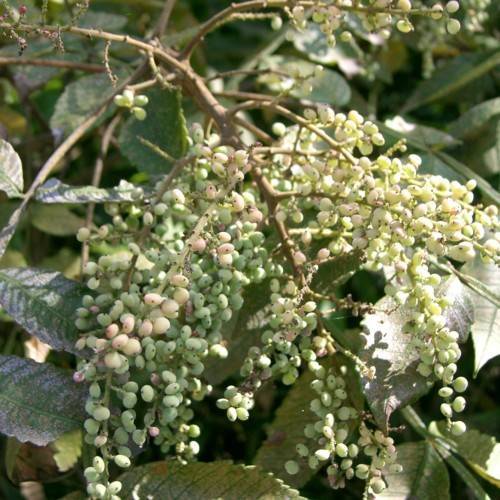
Chinese sumac
Rhus chinensis
Cycle:
Perennial
Watering:
Minimum
Hardiness Zone:
5 - 8
Flowers:
Flowers
Sun:
Full sun,part shade
Fruits:
Fruits Ready In Fall
Edible:
Yes
Leaf:
Yes
Growth Rate:
Low
Maintenance:
Moderate
Drought Tolerant:
Yes
Salt Tolerant:
Yes
Thorny:
Yes
Invasive:
Yes
Care Level:
Medium
watering
Chinese sumac (Rhus chinensis) should be watered when the top inch or 2 of soil feels dry to the touch. This is typically every 1-2 weeks, although watering frequency can vary depending on the environment and season. Water until the soil is saturated, and allow the excess water to drain away. Avoid over-watering, as this can cause root rot in the plant.
sunlight
Chinese sumac is a sun-loving plant that prefers bright, full sun locations for optimal growth. In its natural range, Chinese sumac receives around 6-8 hours of sunlight each day during the growing season. During the warmer months, it can tolerate up to 10-12 hours of sunlight per day, although it should not be exposed to direct, intense afternoon sunlight. In cooler climates, Chinese sumac should be given at least 4-6 hours of direct sunlight daily.
pruning
Chinese sumac (Rhus chinensis) should be pruned in late winter or early spring. Pruning for this species should be light and selective, focusing on removing damaged, diseased, or dead wood and weak growth. This will help to encourage an overall healthy form. Additionally, cutting back some of the longer stems to a higher bud can encourage bushier growth and more flowers.
